Clean Energy Proves Its Power
Researchers found that the clean energy industry is not only more environmentally efficient and cost-effective but also pays higher wages.
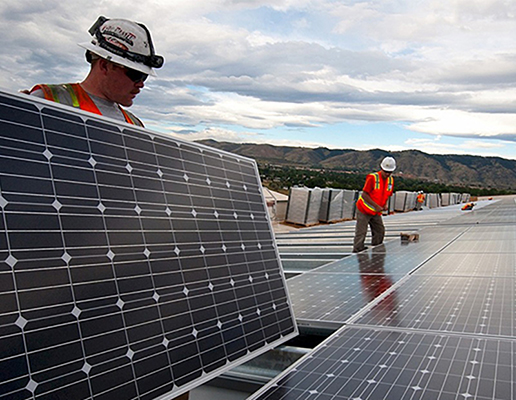 The coal industry is nearing another downturn, with cost efficiency as a main reason. Building new renewable energy is more affordable than continuing to run existing coal-fired plants while prices continue their downward trajectory. By 2025, remaining coal plants in the U.S. are set to cost more to operate than replacing them with wind and solar facilities within 35 miles.
The coal industry is nearing another downturn, with cost efficiency as a main reason. Building new renewable energy is more affordable than continuing to run existing coal-fired plants while prices continue their downward trajectory. By 2025, remaining coal plants in the U.S. are set to cost more to operate than replacing them with wind and solar facilities within 35 miles.
More and more states are committing to 100 percent clean energy goals, which increases demand for workers in the renewable energy field, specifically for building solar panels and wind turbines. The transition from coal to clean energy is not just inevitable, it also creates new economic opportunities.
The renewable energy industry has grown into a major U.S. employer. Environmental Entrepreneurs’ Clean Jobs America report, produced by the Energy Futures Initiative in partnership with the National Association of State Energy Officials and using data collected and analyzed by BW Research Partnership, shows how big it has become. Overall, clean energy jobs totaled nearly 3.3 million at the end of 2018, at a 3.6 percent growth rate. The figure outnumbers fossil fuel workers by almost three-to-one (3.3 million to 1.2 million). Almost 335,000 people work in the solar industry and more than 111,000 in wind, compared to 211,000 in coal mining or other fossil fuel extraction. Employers expect 6 percent job growth for 2019.
The clean energy storage and clean vehicles sectors registered the sharpest increases, of 14 and 15 percent, respectively, driven by growing consumer EV adoption, state expansions of charging infrastructure, falling battery prices and increased solar-storage installations. Clean storage added 75,000 jobs and clean vehicles added 34,000 jobs, with California and Texas leading the country in grid and clean storage jobs. However, Nevada recorded the largest leap—jumping from the 25th to the fourth spot thanks to a 380 percent job surge in 2018, triggered by Tesla’s Gigafactory. Energy efficiency’s dominance in clean energy employment continues to be driven by construction (1.3 million positions) and manufacturing (321,000 jobs), with energy efficiency-related positions accounting for more than one in every six U.S. construction jobs.
Solar jobs decreased for the second year in a row, falling by nearly 15,000 positions last year, with about 90 percent of the losses occurring in California and Massachusetts. Nonetheless, 18 states recorded growth. Despite the overall contraction, solar remains the top U.S. job provider in electric power generation, leading natural gas by more than 200,000 jobs. Wind energy grew 3.5 percent and ranked third, trailing natural gas by fewer than 1,500 jobs.
Higher wages
A new report issued by researchers at Brookings Institution adds to the list of gains, revealing that if the economy shifts toward renewable energy, the jobs created would be attractive ones. According to the report’s authors, workers in clean energy jobs earn higher and more equitable wages when compared to all workers nationally, with mean hourly wages for clean energy jobs exceeding national averages by 8 to 19 percent.
Furthermore, clean energy jobs also provide ample opportunities for low-income workers to raise their pay levels: While nearly one-third of all occupations nationally pay an average wage of less than $15 per hour, less than 4 percent of all clean energy economy occupations are below this threshold.
The positions explored by the report range from jobs unique to the energy sector to support services found throughout the broader economy. More so, the study highlights how continued growth of clean energy sectors will have significant implications for the nation’s labor market, education and training institutions. It also emphasizes the need to locate more durable, family-supporting jobs with limited barriers to entry at a time of widening income inequality and a shrinking middle class.
Even when recording higher pay levels, many occupations within the clean energy economy tend to have lower educational requirements. This is especially applicable within the clean energy production and energy efficiency sectors, which include occupations such as electricians, carpenters and plumbers. Some 50 percent of workers hold no more than a high school diploma, yet earn higher wages than similarly educated peers across other industries. 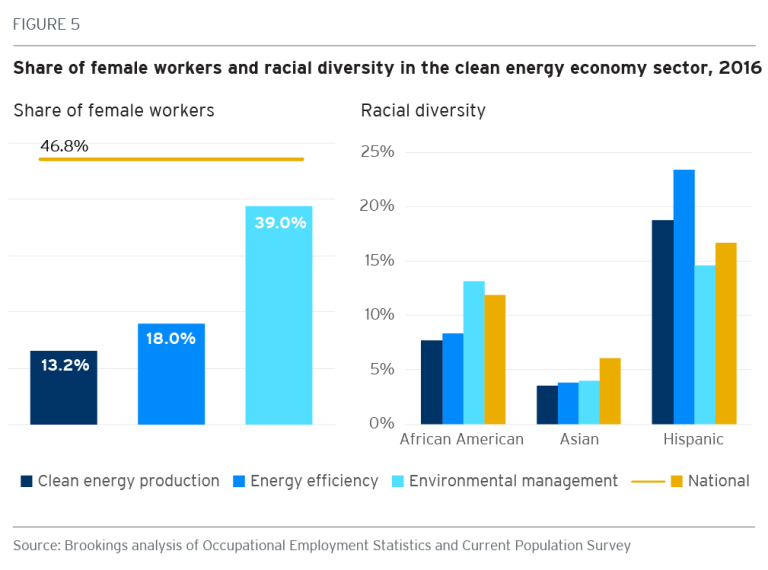
The report also mentions that there is plenty of room for demographic improvement. The analysis found that the sector is currently older, dominated by male workers and lacking racial diversity when compared to all occupations nationally. Less than 20 percent of workers in the clean energy production and energy efficiency sectors are women, while black workers fill less than 10 percent of jobs.

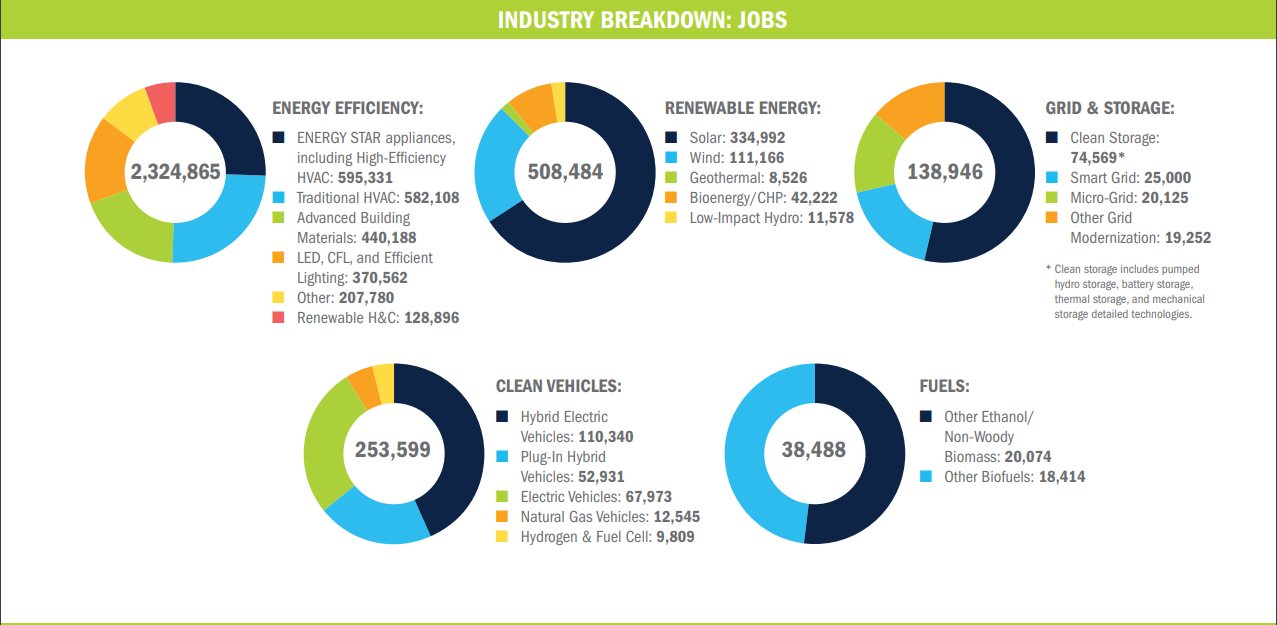
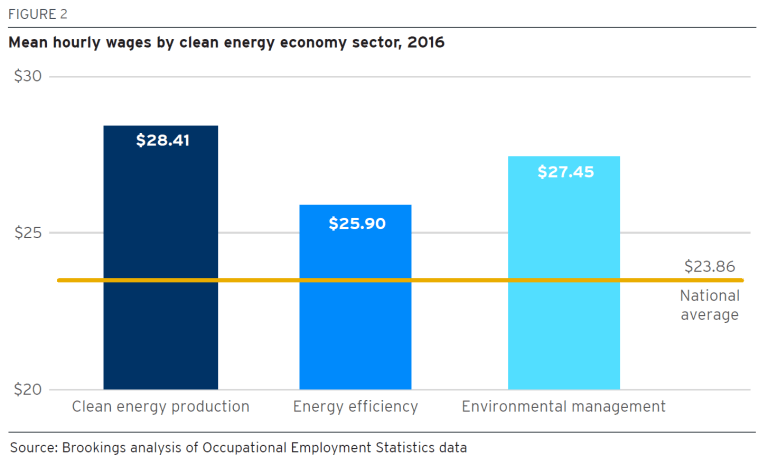
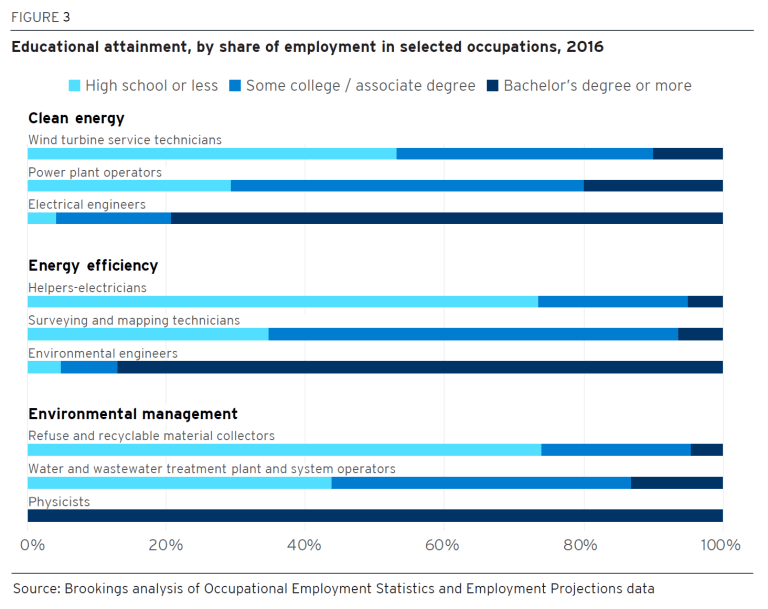






You must be logged in to post a comment.